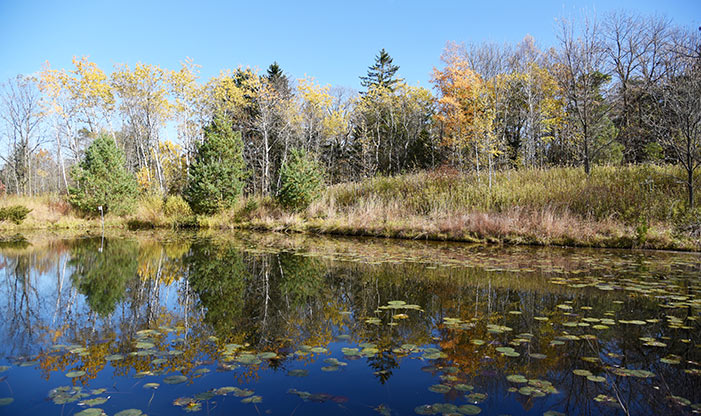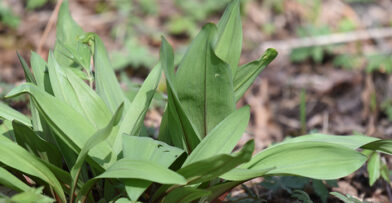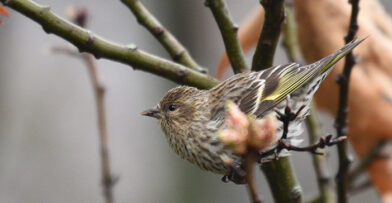As the nights get colder, the Center begins its fall transformation. Quaking aspen, oak, and Sugar Maple trees showing off a beautiful array of purples, deep reds, orange, and yellow leaves are best seen from the top of our 60-foot tower. While viewing the deciduous canopy, keep a close eye out for migrating Sharp-shinned and Broad-winged Hawks that can be seen in large groups called kettles. They use Lake Michigan shoreline as a migratory path on their way south.
Wildlife at Mystery Lake
Take a walk to Mystery Lake and catch a last glimpse of the local amphibians. See Bull, Leopard, and Green Frogs, and reptiles like Blanding’s, Snapping, and Painted Turtles, before they venture to the bottom of the pond to hibernate the long winter away. Migratory waterfowl such as Canadian Geese and a variety of ducks make a quick rest stop at Mystery Island in the middle of Mystery Lake.
A Stopover for Migratory Birds
You will see other migrating birds stopping on their way south. The colorful male warblers are a little less bright than during their spring visit. They are also less vocal. Having already nested and hatched their young, warblers are no longer trying to attract a mate. Yet, they are nonetheless spectacular to see.
Sights on the Prairie
Traveling north to the prairie, meander around the prairie’s newly erected elevated boardwalk path. Soak in native prairie plants like Showy Goldenrod, Blue and New England Asters blooming. See milkweed pods bursting open and expelling fluffy coated seeds. Towering above, giant 6-foot tall Big Bluestem grass sways in the wind. This is the last sign of color and life to the local native flora. In preparation before winter, White-tailed Deer and turkeys can be seen grazing on plants and seeds throughout the prairie as well.
During the fall months, every habitat throughout Schlitz Audubon is in the process of preparation for a long Wisconsin winter journey. Catch the last glimpse of these amazing local species until warmer months come late next spring.


